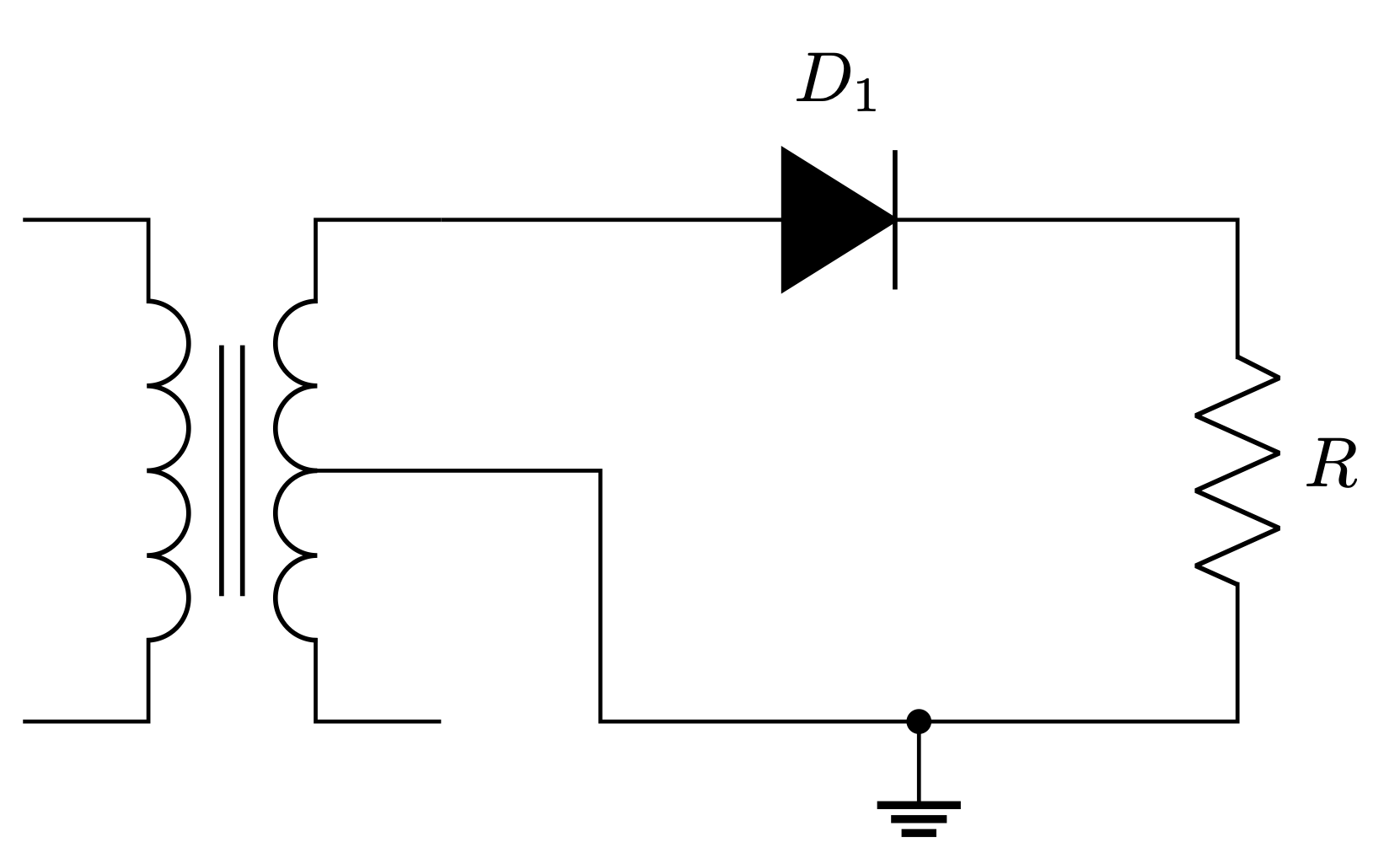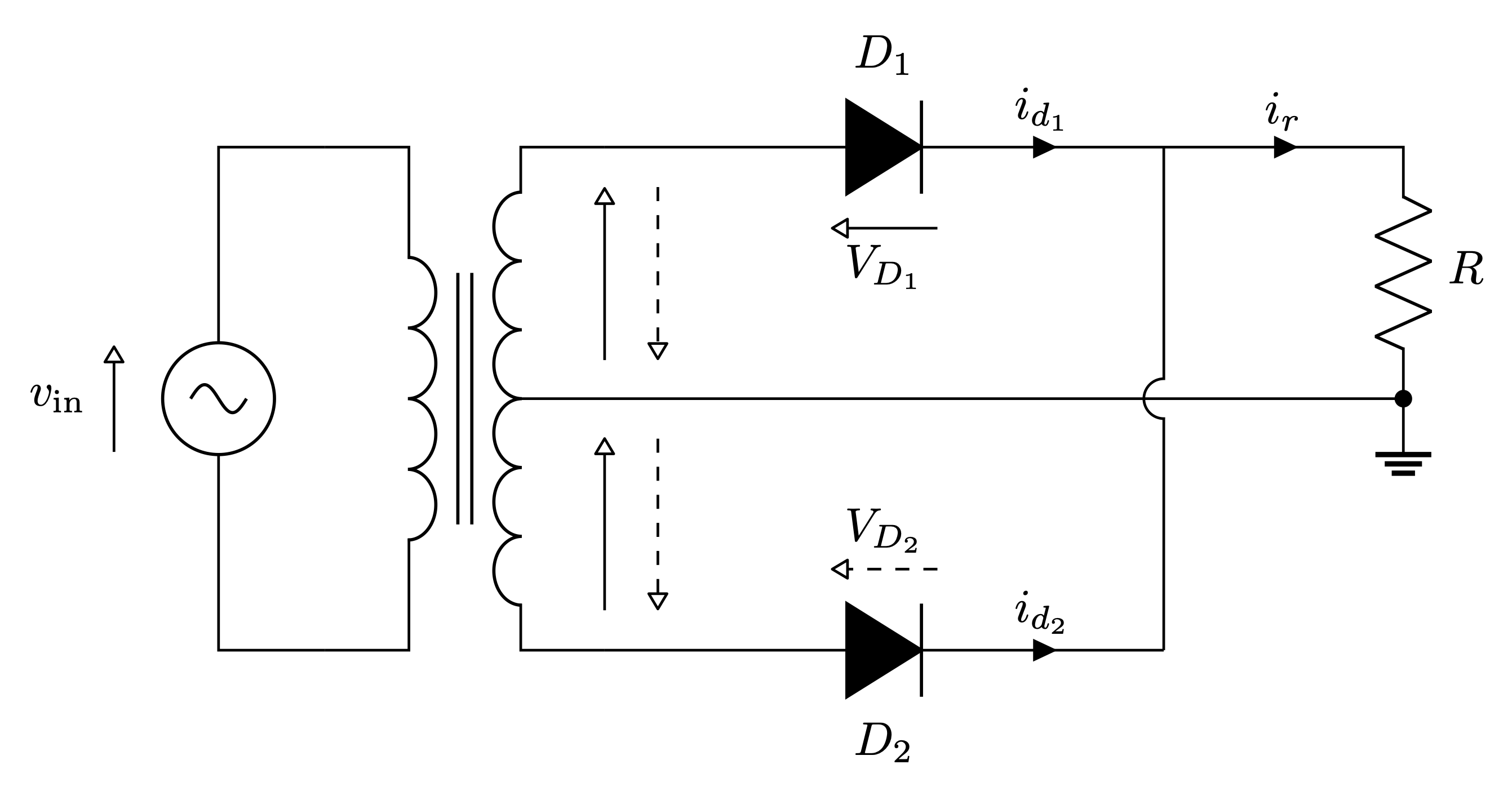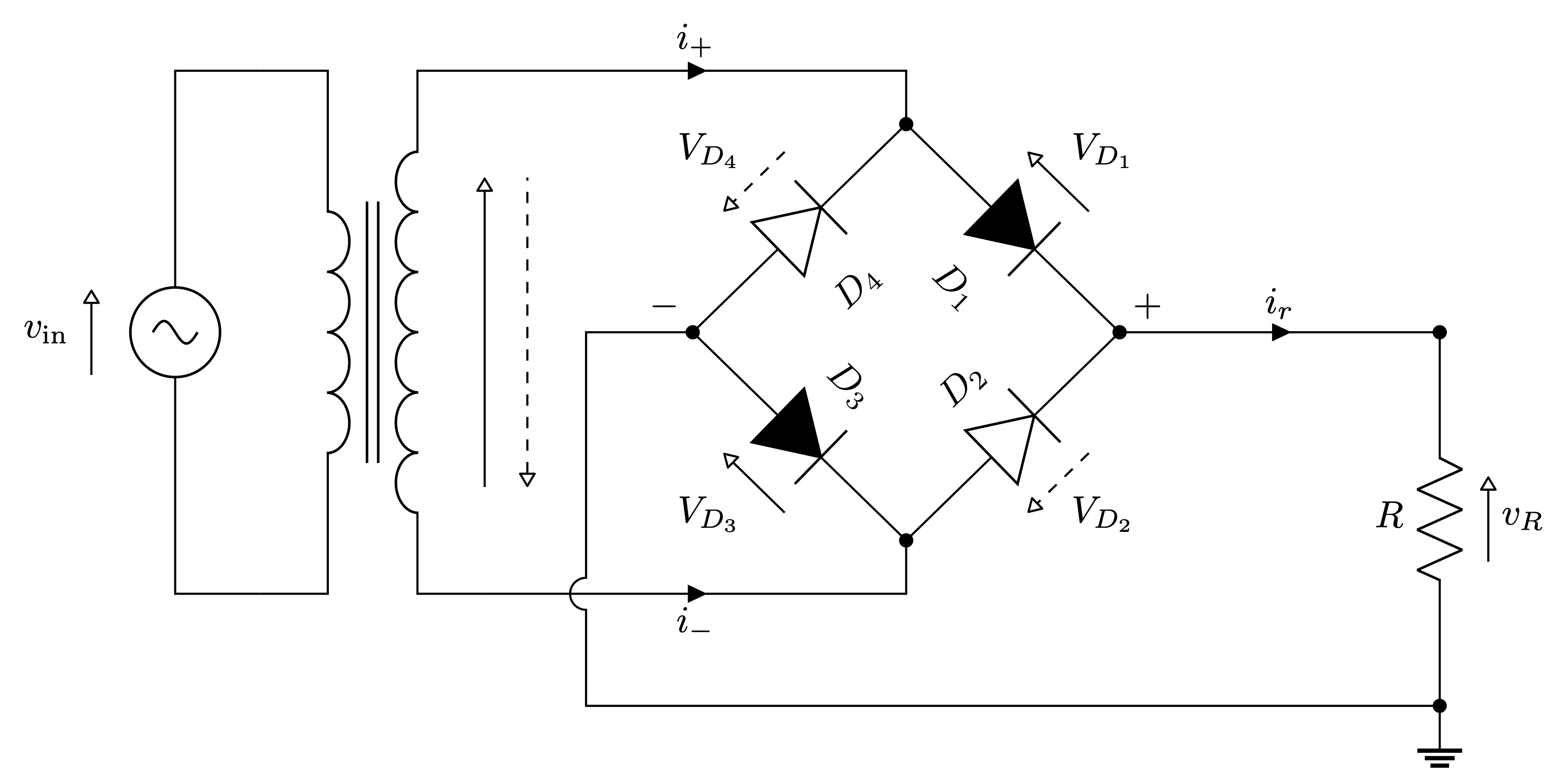
\documentclass[border=3pt]{standalone}
% Circuits
\usepackage[european,s traightvoltages, RPvoltages, americanresistor, americaninductors]{circuitikz}
\tikzset{every picture/.style={line width=0.2mm}}
% Notation
\usepackage{amsmath}
% Tikz Library
\usetikzlibrary{calc}
% Bipoles Specifications
\ctikzset{bipoles/thickness=1.2, label distance=1mm, voltage shift = 1}
% Inductors
\ctikzset{inductors/coils=4, inductors/width=1.2}
% Transformers
\ctikzset{quadpoles/transformer core/height=1.8}
\begin{document}
\begin{circuitikz}
% %Grid
% \def\length{6}
% \draw[thin, dotted] (-\length,-\length) grid (\length,\length);
% \foreach \i in {1,...,\length}
% {
% \node at (\i,-2ex) {\i};
% \node at (-\i,-2ex) {-\i};
% }
% \foreach \i in {1,...,\length}
% {
% \node at (-2ex,\i) {\i};
% \node at (-2ex,-\i) {-\i};
% }
% \node at (-2ex,-2ex) {0};
%Circuit
\def\x{4}
\def\y{3}
\draw
(0,0) node[transformer core] (T) {}
(T.B1) to[full diode, l=$D_1$] ++(\x,0)
to[R, l=$R$] ($(T.B2)+(\x,0)$) -- ++(-0.8*\x,0)
node[ground, pos=0.5] (ground) {} |- (T-L2.midtap);
\draw[fill=black] (ground.north) circle (1.5pt);
\end{circuitikz}
\end{document}




